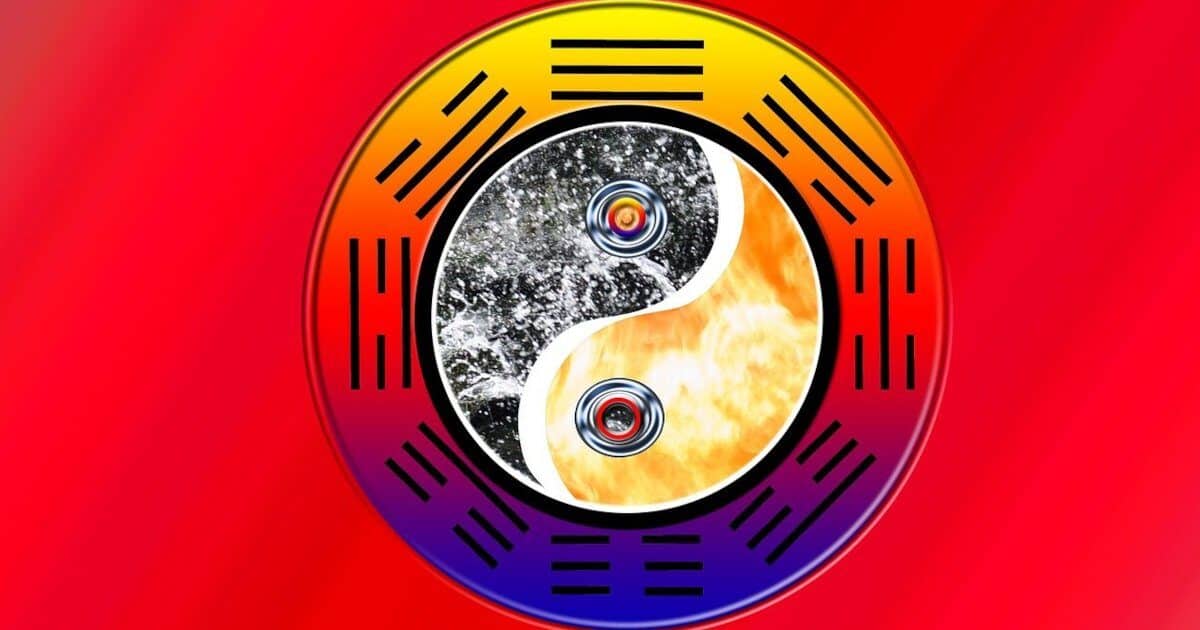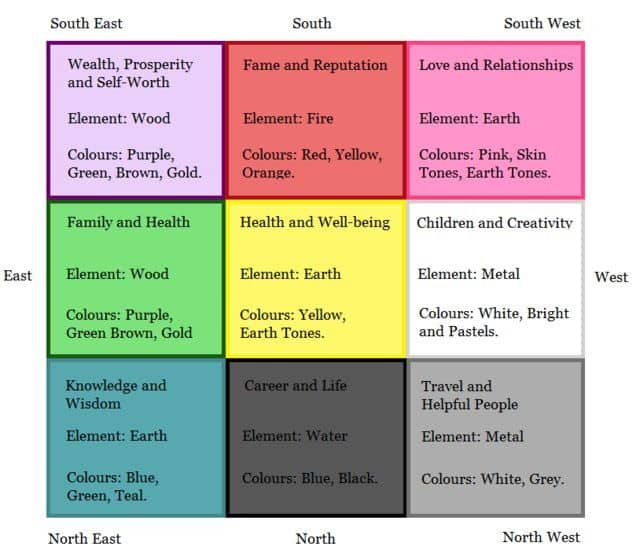The Use of Colour In Feng Shui
Last Updated: September 19th, 2023
By: Mark Stevens
Feng shui places a strong emphasis on colour since it helps balance overall arrangements. Colours influence how a space feels and selecting colours that do not reflect harmony and balance can make a room feel damp and cold. By contrast, the appropriate colours will highlight harmony and encourage relaxation.
Distinct cultures have different beliefs about the best colours to use and how they should be ordered. To make your home come to life and to encourage chi energy to flow and evoke a pleasant balance in your life, there are several well-liked suggestions for using colour in feng shui.
Due to the usage of colours in feng shui, a typical feng shui arrangement of your home differs greatly from what you might anticipate. Warm and cold colours that contrast one another are employed to create an energising environment since traditional feng shui is all about balance. For instance, warm yellow hues encourage attentiveness and vigilance whereas chilly green hues make people drowsy. Additionally, each colour has hot and cold vibes connected with it, such as red being warm and light blues being chilly, which may be used to create the ideal ambience for various spaces in your house. Creating a happy living space may initially appear difficult, but if you realise how colours affect your chi, it becomes much simpler!
Contents

Feng shui may be a great method to use colour to attract natural energy, encourage relaxation, and lessen stress. Warm colours that encourage warmth and movement, such as reds, oranges, yellows, and browns, are excellent for invigorating spaces. Cool colours, such as blues, greens, and greys, on the other hand, are better at promoting relaxation because they anchor unpleasant feelings and soothe the mind. Intense contrasts between warm and cool tones should also be avoided because they can make it harder for your body’s natural heat or cold to permeate the environment. It is incredible how colour affects the body. Taking these factors into account will help you create the perfect living environment for relaxation and evoke the correct mood from every space!
When colours are used effectively, they can create warmth where there was previously none, making a space feel light and airy rather than damp or cold. The greatest approach to learning which colours suit you the best is to do your own experiments and see what works for you.
As discussed in our earlier post on the history of feng shui, the use of colour in feng shui is an idea that has been around for centuries. The ancient Chinese recognised that pleasing colours foster an environment that is good for the spirit. They might also have an impact on your emotions and health. It is thought in feng shui that the colour of your home might either bring you good fortune or ill luck. You may maintain a healthy living environment for your soul by picking the appropriate colours for your home.
In accordance with feng shui, the ancient Chinese believed that if humanity did not employ colour, chaos would result. According to this set of ideas, green denoted steadiness, red warmth and fire, and yellow vitality and vigour.
To symbolise affluence, classic Chinese dwellings had yellow roofs. Black, on the other hand, stood for death and decay; it signified closures as well as a cool detachment from life’s pleasures and sorrows. As a result, older houses frequently featured dark walls or roofs. To look good all the time, a room’s colour must also be in harmony with your body’s inherent energy.
By using it in the locations where you need results right now, you can maximise a colour’s Feng Shui advantages. For this reason, a lot of feng shui experts advise utilising red in open spaces like living rooms, dining rooms, and bedrooms—especially during the afternoon when the temperature is warm enough to activate the body’s internal energy flow (known as yang).
Yellow is another excellent colour for boosting natural energy because it is related to warmth and sunshine (another yang element). As it depicts trees and plants, green is connected to nature, making it the desired colour for interior design concepts since it represents nature itself! If you wish to work with blue crystals or blue jade, you can also use blue; both are connected to water energy, thus blue brings out objects’ watery (Wu) qualities. (Colours can be matched with certain animals, like gold cats, because gold is a warm yellow.)
Choosing Colours to Balance Chi Within Your Home
The goal of feng shui practice is to harmonise various regions of our home and balance the chi energy. This has a good impact on various aspects of our lives. The five elements and their cycles are each represented by a colour in feng shui. Each element is symbolised by colour, and these colours work together to create and distribute chi energy. Blues and greens are the colours of wood. Reds are the colour of fire. Yellow is the colour of Earth. White, beige, and silver are used to depict metal. Dark blues and black colours stand in for water.
Utilising Colour in Feng Shui with The Black Hat Bagua Grid
Instead of having an object formed of the element present in the environment, the Black Hat sect allows the use of colour to symbolise the element. This means that any object of colour could be used, even your favourite crystals as aforementioned! The below graphic of the rectangle/square Bagua can be used as a guide to determine which colour corresponds to each element.
For example, if we wanted to increase the energy in our area of knowledge and wisdom, we could either have an earthen object (like a bonsai tree), or we could use the colours blue, green, or teal to achieve so.

Below is a list of the gua sections in relation to the rectangular Black Hat Bagua grid, along with its associated colours and elements. We’ve added in a selection of crystals that can also be utilised, as in the Black Hat sect any object of colour can be used to represent the element itself!
Bagua Grid Colour Representations
Wealth, Prosperity, and Self-Worth (South East)
Element: Wood
Colours: Purple, green, brown, gold.
Crystals: Amethyst, green jade, peridot, tiger’s eye.
Fame and Reputation (South)
Element: Fire
Colours: Red, yellow, orange.
Crystals: Jasper, cinnabar, carnelian.
Love and Relationships (South West)
Element: Earth
Colours: Pink, skin tones, earthen tones.
Crystals: Rose quartz, pink spinel, pink calcite.
Health and Family (East)
Element: Wood
Colours: Purple, Green/brown, Gold.
Crystals: Amethyst, purple agate, sunstone, lepidolite.
Health and Well-being (Center Gua)
Element: Earth
Colours: Yellow, earthen tones.
Crystals: Topaz, tiger’s eye, serpentine, lava stone.
Children and Creativity (West)
Element: Metal
Colours: White, bright, and pastel colours.
Crystals: Spinel, tourmaline, aquamarine, opal, moonstone.
Knowledge and Wisdom (North East)
Element: Earth
Colours: Blue, green, teal.
Crystals: Turquoise, malachite, aventurine, serpentine.
Career and Life (North)
Element: Water
Colours: Blue, black.
Crystals: Obsidian, black onyx, azurite, sapphire.
Helpful People and Travel (North West)
Element: Metal
Colours: White, grey.
Crystals: Opal, moonstone, howlite, quartz, agate.
Conclusion
Applying colours in Feng Shui makes perfect sense when you consider how much it can affect a person’s health and spirituality! Practitioners of Feng Shui take great care when choosing colours for their homes— knowing how important it is to look after their spiritual well-being!
Will you be paying more attention to what your space is telling you?
We hope you’ve found this post helpful and if you’ve enjoyed it please feel free to share it with your mystical or spiritual friends using the buttons below. If you have any comments, questions or other feedback please let us know using the comment form below.
Thanks for reading!
Sources
https://education.nationalgeographic.org/resource/feng-shui/
https://www.thespruce.com/feng-shui-color-tips-to-create-a-beautiful-home-1274395
https://www.housebeautiful.com/uk/decorate/a3099/positive-energy-into-home-using-feng-shui/
https://www.annafreud.org/on-my-mind/self-care/colour-therapy/
Featured Image by Cor Gaasbeek from Pixabay
